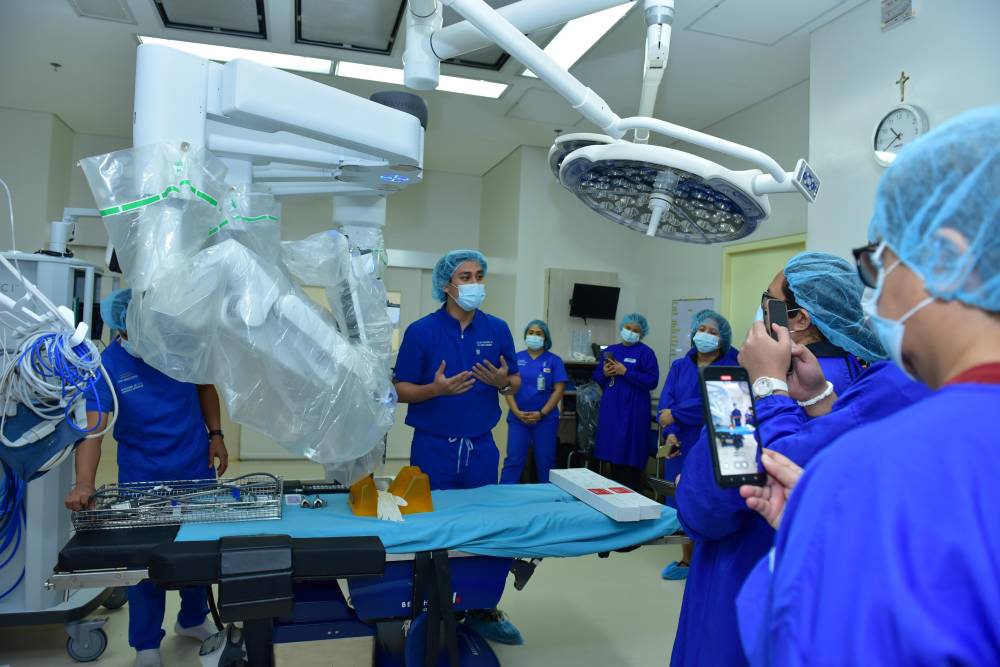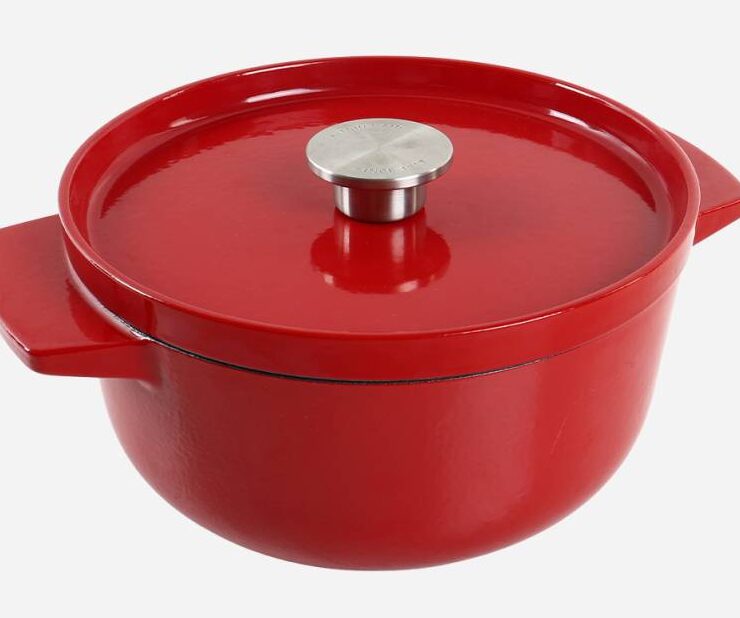Robotic surgery: Less blood, less pain, faster recovery

To operate on a person using a surgical robot, doctors have to make their fingers and feet dance. Each movement is translated into precise motions by a four-armed robot that never trembles and never tires. Surgeons (yes, human beings with years of experience in open surgery and laparoscopy) are in full control of the console, which looks more like an eye exam machine that you can find in any optometrist shop.
“You have a humongous robot right in front of you, but the truth is, it’s a very, very gentle robot,” said Makati Medical Center (MakatiMed) Hepatobiliary Surgery and Liver Transplantation Section chief Dr. Catherine SC Teh. “So the robot has very minimal tissue manipulation, which is very, very crucial in surgery.”
If this is the future of surgery in the country, then it looks promising. MakatiMed has unveiled its latest and most powerful surgical tool called the Da Vinci Xi. The robotic surgical system was developed by Intuitive Surgical, a company based in Sunnyvale, California.
It is a fourth-generation system designed to facilitate minimally invasive surgeries across multiple specialties, including urology, gynecology, general surgery, hepatobiliary surgery, colorectal surgery, and head and neck surgery.
The doctors of MakatiMed are excited about it, and for good reason. Since it was brought into the hospital around May last year, it has already been used in nearly 100 surgeries. At the forefront of this technology are section chief of Urogynecology & Pelvic Reconstructive Surgery Dr. Jennifer Marie Jose; chair of the Department of Surgery and urologic oncologist Dr. Jaime Songco; Department of Surgery consultant Dr. Mark Augustine Onglao; and section chief of Head and Neck Oncology and Department of Otolaryngology-Head and Neck Surgery Dr. Arsenio Cabungcal.

Three components
According to medical director Dr. Saturnino P. Javier, specialists are already undergoing training to carry out thoracic and cardiac surgeries.
Da Vinci Xi has three components: the console, which the surgeon manipulates from across the room; the vision cart, which is the image processing unit; and the patient-side cart, which has the four arms. Those arms are lent to the surgeons, as if they are Leonardo da Vinci’s Vitruvian Man.
Onglao said that the usual setup for a laparoscopic surgery includes a camera assistant and another person who controls the instrument. The surgeon is at the mercy of his team.
“Even if you’re the best surgeon around, if your cameraman is sleepy or if your assistant is inexperienced, the quality of your surgery will be affected,” he said. “But with the robot, you become a four-armed surgeon. Because all the arms of the robot are under the direct control of the surgeon.”
The surgical field is magnified up to 10 times with exceptional clarity, providing a level of detail that far exceeds traditional laparoscopy. This enhanced view gives surgeons an unparalleled perspective of the area they’re operating on.
“Because we are actually controlling the camera and all the arms, we achieve autonomy. We control everything, and therefore it becomes very precise,” said Jose.
The console also offers greater comfort for the surgeon. Rather than standing for 10 hours or more, they can sit in an ergonomic chair and operate from a more relaxed position. Even if their hands tremble slightly, the system filters it out, ensuring steady movements. With less physical strain and more control, the surgeon is able to work more efficiently.
It’s the patients who benefit the most from it. Surgeons only need to make small incisions to do what needs to be done. “The chances of infection are less. Blood loss is very minimal. They would recover fast and go back to their activities,” Jose said. “It is good for the elderly patients because they can tolerate it.”
The robot allows them to become contortionists with its 360-degree range of motion. It also has amazing dexterity because it will adapt to the user, whether they are left- or right-handed. The flexibility allows doctors to do more complicated maneuvering but with a less invasive overall approach. Cabungcal talks about a case where he made the wrist of the robot go through the mouth instead of making an incision through the neck. It allowed him to see a tumor which he previously did not see in the preoperative test. He successfully removed the tumor, and the result is nothing short of extraordinary.

Priceless benefit
Recovery for the patients after a neck surgery would have food pass through the nose because they will have difficulty swallowing. The Da Vinci could help patients avoid going through that. Comfort is a priceless benefit.
Teh shares her own experience. She said that if she had to perform an open liver resection (the process of removing a portion of the liver), the patient has to stay in the hospital for seven to 10 days. But in a robotic liver resection, they only have to stay for one to five days.
“Patients can go back to work, walk, and do whatever their routine is in two to three months in open surgery. In robotic (surgery), in one to two weeks, they’re flying elsewhere,” Teh said.
It’s a game-changer in cancer treatment.
“It’s now the gold standard for prostate cancer surgery. It’s better at nerve sparing, improved continence and erectile function, less blood loss, and shorter hospital stay,” said Songco. Patients start walking post-operation, with the catheter being removed after five to seven days.
Onglao explains the benefits of a good surgery. A good removal of a cancerous tumor can decrease the chances of recurrence.
“Why are we so hell-bent on precision, dexterity? It’s all the same, right? Because we believe, especially for cancer, better surgery leads to better outcomes,” said Onglao.
Robotic surgery is more expensive than laparoscopy. It is not covered by health insurance so far. But what you get in turn is quality of life. Songco said that there are two things that are important in his specialization. “The first is confidence, the other is the erection. That we can promise (in robotic surgery), but in open surgery, we cannot,” said Songco.
The excitement among the doctors says it all: This is the future of surgical care in the country. Da Vinci Xi is not Baymax. It doesn’t have a personality or a mind of its own. If we must compare it to a fictional robot, Atom from “Real Steel” is closer because it’s dependent on the expertise of its human controller.





















